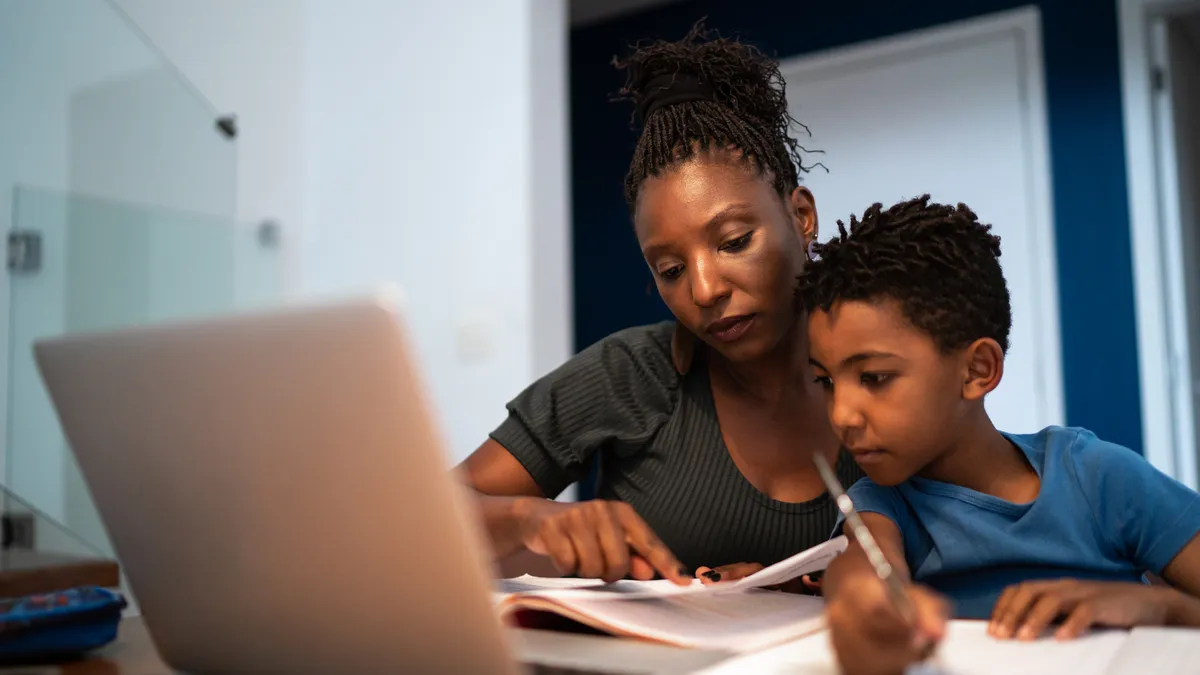Dive Brief:
- A lack of consistent and high-speed broadband, the high cost of those internet services, and an absence of ongoing funding for affordable internet programs continue to hinder technology access in communities nationwide, according to a digital equity resource guide from the U.S. Department of Education’s Office of Educational Technology.
- Suggested strategies include building partnerships with internet service providers to improve equitable broadband infrastructure and using public spaces and community partnerships to create more internet access. Ongoing federal, state or local funding can also help districts buy equipment and provide affordable internet access and digital literacy programs, the guide said.
- An overall lack of trust in the government or private companies creates a barrier to adopting digital equity plans, the report said, but district leaders can address this by working with community members on goals and strategies.
Dive Insight:
The COVID-19 pandemic exacerbated the digital divide — highlighting that not every student had access to a strong, sustainable internet connection when they had to attend school from home.
Thirty-two percent of U.S. households cannot afford or maintain internet services, according to the guide. And roughly 15 million to 16 million K-12 students lack sufficient access to broadband or learning devices at home.
“Students without broadband access or only a cell phone have lower rates of homework completion, lower grade point averages … even lower college completion rates,” said U.S. Education Secretary Miguel Cardona in a statement regarding the new guide. “Today, there can be no equity without digital equity.”
A lack of large-scale broadband infrastructure due to digital redlining — which can occur when internet service providers invest in building fiber infrastructure in wealthier neighborhoods while ignoring investments in low-income communities — leads to low-income users having slower but more expensive internet access, the report said.
An economic cost analysis released in August found it can cost five to 10 times more for a school or library to work with a private cellular company than if they develop and share their own wireless network with the community. That could be done through schools and libraries working with a private network or establishing their own through the publicly available Citizens Broadband Radio Service, the analysis found. Raul Katz, president of Telecom Advisory Services and director of business strategy research at the Columbia Institute for Tele-Information, conducted the analysis contracted by the nonprofits Schools, Health & Libraries Broadband Coalition and the Open Technology Institute at New America.
A 2021 E-rate survey by consulting firm Funds for Learning found a majority of the 2,164 respondents said they want to expand E-rate support for internet connections beyond school and library campuses. The FCC’s E-rate program provides discounts on telecommunications and internet access to schools and eligible libraries depending on the poverty level of the communities they serve, but the program currently does not provide funding for internet access beyond a school or library’s doors.













